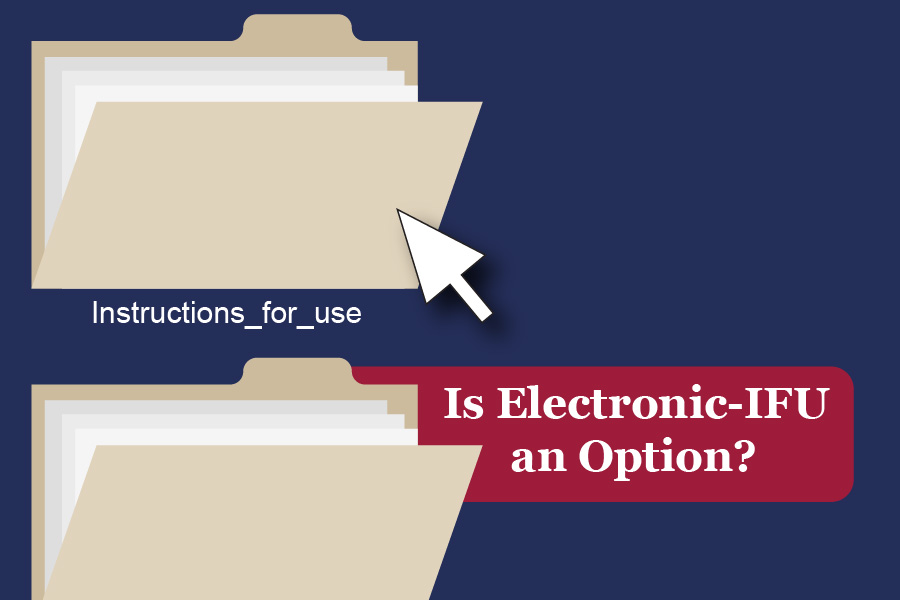Changes in technology call for changes in the ways we use that technology. This means that the instructions for use which are used as a tool to help users operate a medical device must also change and adapt.
While using paper-based instructions for use (IFU) has been a standard practice, there are several risks associated with it that come to light when the instructions need to be updated due to post-market feedback or continuous improvement activities.
With the rise in a digital media interaction, the idea of electronic-Instructions for use is becoming more popular. This allows the manufacturer to update the instructions for use whenever there is a design change or a recommended change in the operation due to a risk identified post-market.
The question then arises- what are the requirements around it? e-IFUs may be provided for any device type however, a safe practice would be to also provide paper IFUs. If you plan on providing only e-IFUs, then the users must be made aware of such arrangements. Additionally, e-IFUs available on the company’s website/app must be kept up to date for each version/model of the device still in the field.
Since IFUs are considered part of the product’s label, e-IFUs must also comply with the labeling requirements applicable to the product. As all product labels (including paper IFUs) undergo quality control, e-IFUs must also be subjected to the same level of quality control.1
In the case where an IFU is provided electronically only, the risk associated with providing an electronic IFU must be considered in the product’s risk assessment file and appropriate human factors analysis must be conducted.
Companies may think that e-IFU is an easy way to go and reduces the financial burden on having to print copies of paper IFU, on the contrary, I think it adds another risk level to the product such as an obsolete version being available on the website, quality control of e-IFUs, language requirements for labels and many more.
Need expert regulatory guidance on your product label? Call us today at +1 248-987—497 or email us at info@emmainternational.com
1EU Commission (March 2012) COMMISSION REGULATION (EU) No 207/2012 of 9 March 2012 on electronic instructions for use of medical devices retrieved on 02/18/2021 from https://eur-lex.europa.eu/LexUriServ/LexUriServ.do?uri=OJ:L:2012:072:0028:0031:EN:PDF






